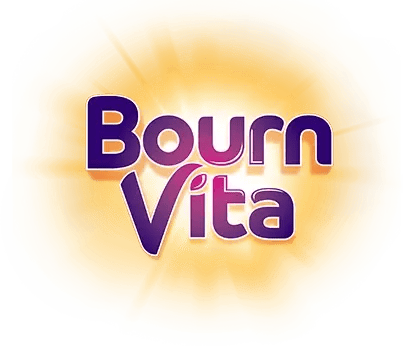- Prioritize Protein-Rich Foods
- Add Calcium and Vitamin D Sources
- Encourage Daily Outdoor Play
- Make Hydration a Priority
- Include Whole Grains and Healthy Carbohydrates
- Introduce Stretching and Strength Exercises
- Create a Consistent Routine
Introduction
Growth during childhood and adolescence depends on the perfect balance of nutrition and physical activity. The food children eat provides the vitamins, minerals, and proteins their bodies need to build strong bones, develop muscles, and stay energized. Exercise ensures these nutrients are absorbed and used effectively, keeping kids active, agile, and resilient as they grow.

A nutritious diet forms the foundation for healthy development. Meals that include whole grains, fruits, vegetables, dairy, and protein-rich foods like eggs, fish, or lentils help children get the nutrients essential for strength, focus, and immunity. These foods not only support physical growth but also contribute to sharper concentration and emotional well-being. Without consistent nourishment, kids may experience fatigue, weak bones, or slower development.
Physical activity complements good nutrition. Running, cycling, swimming, yoga, or even playful stretching improve flexibility, stamina, and posture. Exercise also supports healthy weight, strengthens the heart, and keeps the mind clear. Encouraging outdoor play and movement makes fitness fun and natural.
Together, nutritious food and regular exercise create a foundation for lifelong health. These daily habits nurture both physical and emotional strength, helping children grow taller, stronger, and more confident—ready to face every new challenge with energy and joy.
7 Practical Ways to Support Growth Through Food and Activity

Growth is a natural process shaped by many factors, but nutrition and exercise remain the two most powerful influences during childhood. The right foods provide the essential building blocks for strong bones, muscles, and immunity, while physical activity ensures the body uses those nutrients effectively. Together, they create a healthy balance that allows children to thrive both physically and emotionally.
Parents who encourage a mix of nutritious meals and regular exercise set the foundation for lifelong wellness. By focusing on consistent routines, you can help your child not only grow taller and stronger but also feel more energetic, confident, and resilient.
Prioritize Protein-Rich Foods
Protein is essential for building muscles, repairing tissues, and supporting overall growth. According to a study published in Nutrients. 2019, include foods like eggs, pulses, paneer, chicken, or fish in daily meals. These foods help your child stay active, improve stamina, and support healthy weight gain during the growing years.
Add Calcium and Vitamin D Sources
Strong bones depend on calcium and Vitamin D. As per a study published in Nutrients. 2010, milk, yogurt, cheese, ragi, and leafy greens provide calcium, while safe sunlight exposure ensures Vitamin D absorption. Together, they help maintain bone density and prevent weakness as children grow.
Encourage Daily Outdoor Play
Exercise is not just about sports; even outdoor play like running, cycling, or skipping has big benefits. According to the National Institute on Aging, these activities improve balance, flexibility, and stamina while also supporting healthy posture. At least an hour of outdoor play keeps children active and engaged.
Make Hydration a Priority
Water plays an important role in digestion, circulation, and nutrient absorption. According to the study published in Adv Nutr. 2021, dehydration can make kids feel tired and less active. Encourage regular water intake throughout the day and offer fresh fruits like watermelon and oranges that also keep them hydrated.
Include Whole Grains and Healthy Carbohydrates
Carbohydrates provide energy, which children need for active play and learning. According to the Dietary Guidelines for Indians-2024, whole grains like brown rice, oats, or chapati from wheat supply energy along with fiber and nutrients. Healthy carbs ensure kids have the fuel to stay active and focused.
Introduce Stretching and Strength Exercises
Simple exercises like yoga, swimming, or light stretching improve flexibility, strengthen muscles, and support healthy posture. Research conducted by J Gerontol A Biol Sci Med Sci. 2015 shows that strength-building activities like climbing or push-ups can also help. These movements allow children to develop better coordination and body awareness.
Create a Consistent Routine
Consistency is key in growth, setting a regular schedule for meals, sleep, and exercise helps children stay disciplined and energized. A study published in JNMA J Nepal Med Assoc. 2022 highlights that, a balanced routine reduces stress, improves metabolism, and ensures the body has enough rest to grow properly.
Conclusion

Supporting your child’s growth goes beyond height, it’s about helping them develop strength, confidence, and overall well-being. The right balance of nutrition and physical activity lays the foundation for healthy development. Protein-rich foods like eggs, lentils, paneer, and fish help build muscles and tissues, while calcium from milk, yogurt, or leafy greens strengthens bones. Whole grains provide steady energy, and proper hydration keeps every system in the body functioning smoothly. Outdoor play, sports, cycling, and stretching keep the body active and flexible, ensuring that nutrients are properly utilized. These activities also improve posture, coordination, and endurance while giving kids a fun outlet for energy. A mix of good food and regular movement supports not only physical growth but also emotional balance and self-confidence.
Her love for storytelling began with reading her grandfather’s speeches, where Tarishi saw the power of words in creating lasting memories. Combining her passions for food and writing, she has turned her life into a fulfilling path of sharing stories that celebrate flavours and how food brings communities together.
The views expressed are that of the expert alone.
The information provided in this content is for informational purposes only and should not be considered a substitute for professional medical advice, diagnosis, or treatment. Always seek the advice of your physician or another qualified healthcare provider before making any significant changes to your diet, exercise, or medication routines. This is a sponsored article.
References
https://pmc.ncbi.nlm.nih.gov/articles/PMC9794932/
https://pmc.ncbi.nlm.nih.gov/articles/PMC5864160/
https://www.nin.res.in/dietaryguidelines/pdfjs/locale/DGI07052024P.pdf
https://pmc.ncbi.nlm.nih.gov/articles/PMC8634318/
















